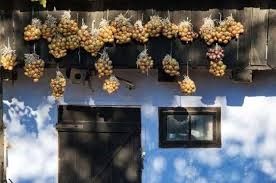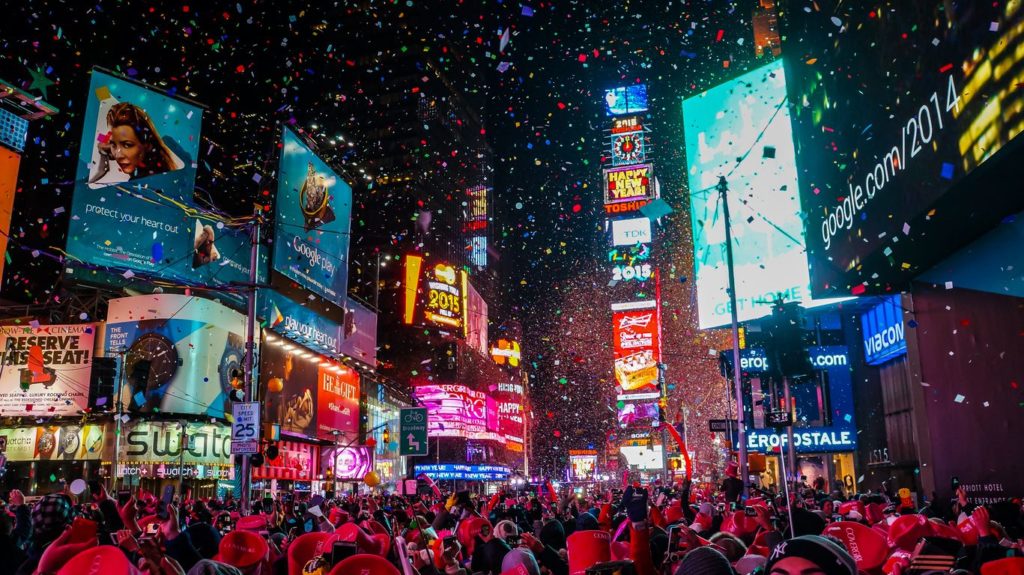Happy New Year! Bonne Année! ¡Feliz Año Nuevo! 新年快乐! Manigo Bagong Taon!
Whether you’re celebrating New Year’s Eve with family or friends at home or from an exotic location, you probably have a few New Year’s traditions of your own. You might be familiar with some US traditions like singing “Auld Lang Syne” or eating black-eyed peas, collard greens and cornbread for good luck. Let’s look at some more unique New Year’s traditions from around the world.
 In Spain the custom is to eat 12 grapes – one for each chime of the clock at midnight on New Year’s Eve. Each grape represents good luck for one month of the new year. In Madrid and Barcelona, people gather in main squares to eat their grapes together and drink bottles of cava (Spanish sparkling wine.)
In Spain the custom is to eat 12 grapes – one for each chime of the clock at midnight on New Year’s Eve. Each grape represents good luck for one month of the new year. In Madrid and Barcelona, people gather in main squares to eat their grapes together and drink bottles of cava (Spanish sparkling wine.)
 In Denmark people “smash in” the New Year by throwing old glasses and plates against the doors of family and friends’ houses to ward off bad spirits. They also jump off chairs together at midnight to “leap” into January for good luck throughout the coming year.
In Denmark people “smash in” the New Year by throwing old glasses and plates against the doors of family and friends’ houses to ward off bad spirits. They also jump off chairs together at midnight to “leap” into January for good luck throughout the coming year.
 Panamanians burn effigies (“muñecos”) of well-known people such as local politicians and movie stars in an attempt to banish evil spirits in the coming year.
Panamanians burn effigies (“muñecos”) of well-known people such as local politicians and movie stars in an attempt to banish evil spirits in the coming year.
 The New Year celebration is called “Hogmanay” in Scotland. During this time “first-footing” is practiced across the country. The first person to cross a threshold of a home at the start of the New Year should bring gifts for luck. These gifts may include a silver coin, coal, bread, salt, evergreen branches and whisky, which represent financial prosperity, warmth, food, flavor, long-life and good cheer, respectively.
The New Year celebration is called “Hogmanay” in Scotland. During this time “first-footing” is practiced across the country. The first person to cross a threshold of a home at the start of the New Year should bring gifts for luck. These gifts may include a silver coin, coal, bread, salt, evergreen branches and whisky, which represent financial prosperity, warmth, food, flavor, long-life and good cheer, respectively.
 In Greece, onions are traditionally hung on the front door of homes on New Year’s Eve. This is seen as a symbol of rebirth in the New Year. On New Year’s Day, parents wake their children by tapping them on the head with the onions.
In Greece, onions are traditionally hung on the front door of homes on New Year’s Eve. This is seen as a symbol of rebirth in the New Year. On New Year’s Day, parents wake their children by tapping them on the head with the onions.
Of course, all these traditions are based on the Western New Year which uses the Julian calendar, created by the Romans. Other countries and cultures rely on different lunar or solar calendars and celebrate the New Year at other times of the year. The most well-known is the Chinese New Year, which is based on the Gregorian calendar and whose exact date varies from year to year. Other examples are the Islamic New Year (Muharram), Thai New Year (Songkran) and the Hindu New Year (Diwali).
In some counties such as Russia, Armenia, Bulgaria, Georgia, Ukraine and Serbia, they are even lucky enough to celebrate the New Year twice — once according to the Julian calendar like the US and again in January or February based on the Gregorian calendar.
No matter where you are in the world or what traditions you practice, ISI Language Solutions wishes you and yours a Happy New Year! Cheers!









